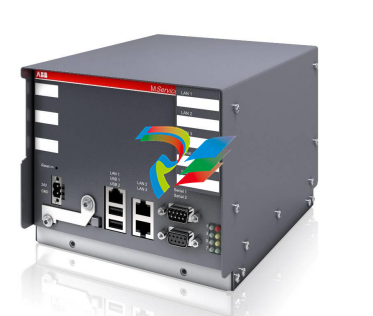
ABBCondition MonitoringMService V7.7 - User Manua MService V7.7 - User Manua [Document Type] ABB Ability™ Condition Monitoring for electrical systems - CMES User Manual MService Condition Monitoring V7.7 User Manual
Abbreviation Term Description
Eth. Ethernet Ethernet is a local area network (LAN) technology.
The Ethernet standard specifies the physical medium, access control rules and the message
frames.
HMI /
WebHMI
Human Machine Interface
Hard- and Software which implements the user interface.
A WebHMI is a SW providing the HMI in an Internet
web browser
LVS Low voltage switchgear
Low voltage switchgear assembly built in accordance with IEC 61439-1.
MCC Motor Control Centre Common term for switchgear used for motor control and protection.
MNS Modular Low Voltage Switchgear family from ABB
UMC /
M10x
Universal Motor Controller
An intelligent motor controller for 3-phase AC induction motors combining the two classical functions of motor protection and motor management in a single device plus offering diagnostic
and fieldbus communication.
MTQ22-FBP The MTQ22-FBP Ethernet adapter module allows
the connection of FBP devices to Ethernet
MNS iS The integrated intelligent switchgear solution
from ABB.
MStart
MFeed
MControl
MConnect
MSpeed
MLink
MView
MNavigate
MNS iS components integrated in the switchgear,
see the MNS iS System Guide for technical details
OPC Open Platform Communications
The industrial de-facto standard for exchange of
information between components and process
supervision and monitoring applications using
TCP/IP based networks
OPC ID OPC Network identifier
The OPC ID configured for MLink devices and for
the OPC Server defines, which MLink devices are
communicating to which OPC server. This defines
a kind of logical sub-net within a certain IP network.
TCP/IP Transmission Control
Protocol / Internet
Protocol
TCP/IP is a high-level connection oriented, reliable, full duplex communication protocol developed for networked integration of the heterogeneous computer systems.
NAMUR NAMUR is an international user association of automation technology in process industries.
1.3 Related Documentation
[1] 1TGC910001B0204 MNS iS System Guide
[2] 1TGC910232M0201 OPC Server Interface Manual V7.7
[3] 1TGC910221M0201 MNS iS Interface Manual Web Interface_Rel_7.0
[4] NE107 (2006-02-10) NAMUR Recommendation Self-Monitoring and Diagnosis of Field Devices
1.4 Related System Version
The content of this document is related to MService V7.7 and onwards
1.5 Cyber Security
Following cyber security-based recommendations must be considered using MService device in an industrial Ethernet network environment:
• MService shall be connected to an isolated network in general. If MService is connected to a
plant network a firewall shall be considered to control access to MService web-based user interface.
• Insertion of a USB drive / pen-drive / stick into a USB port of MService shall be prevented at any
time except connecting an external hard-disk for data backup purpose. Inserting a faulty USB
drive (e.g. with faulty USB-HID(*) descriptor) can lead to a stop of MService functionality. In such
a case MService will not record any data from connected field devices any longer and a device
reboot is required.
To prevent an unrestricted access to the USB ports of MService USB Port Locks shall be used.
These port locks reduce the risk of data leakage, data theft and unauthorized uploads with a
software-free solution that physically blocks USB ports from unauthorized access. There’s even
an option to block multiple adjacent ports with one lock and allow continued secure use of authorized USB devices.
• User must log-off from MService when leaving the workplace to prevent another person using
the active login account. The log-off button must be used in this case as closing the Web
browser will not terminate the active web-session.
(*) HID - Human Interface Device
2 System Overview
2.1 Product Concept
The MService device implements an innovative approach to condition monitoring: The supervision of
the performance and health status of a MNS and MNS iS switchgear are made possible with a smallscale and easy-to-use embedded industrial PC.
The MService implements the whole condition monitoring concept from collecting field level real-time
data to performing assessment algorithms. Based on that, it is possible to work out a prognosis of
developing situations and prompting the operator for action. However, if the situation continues and
results in a tripping or failure, the MService offers clear diagnosis for fast problem resolution.

MService targets two main application scenarios:
• Customer’s staff can use the device for performance analysis and continuous support of
maintenance planning for MNS and MNS iS system, with MService installed as permanent part of
the switchgear.
• ABB’s service personnel use the device to place it in a customer’s switchgear to support customer decisions in keeping the switchgear in good condition by collecting data for a certain
time and derive an assessment on the switchgear performance and operational status.
To fit to these scenarios, the MService employs a small-scale, compact approach to enable fast commissioning and ease of use.





























































































































